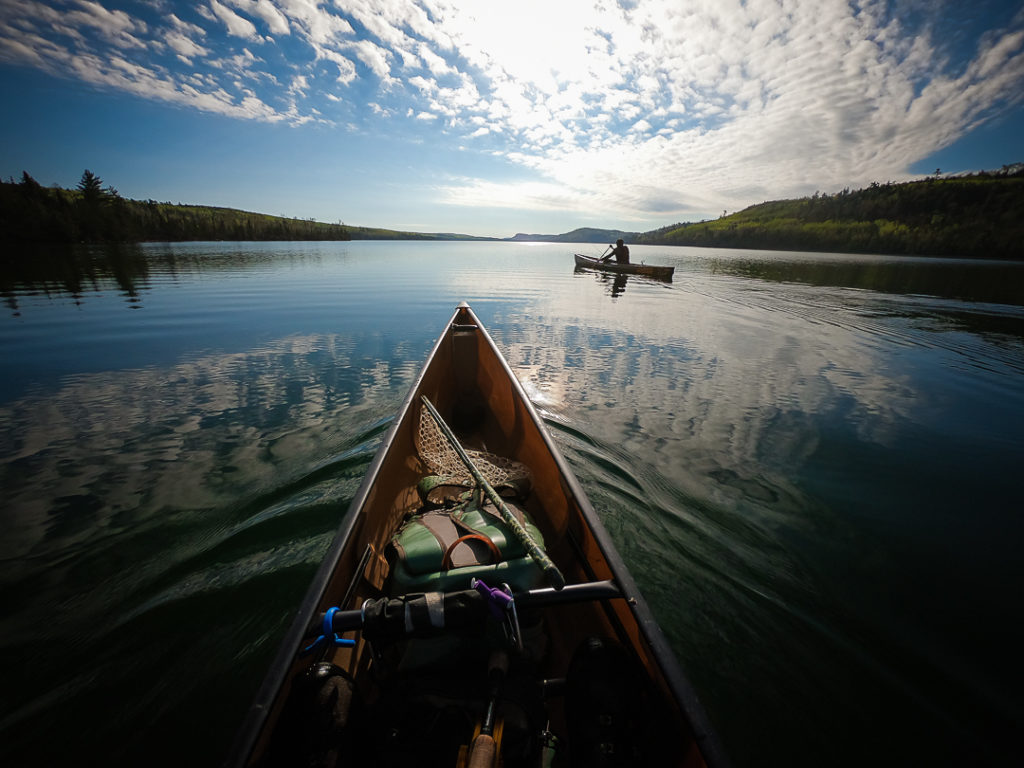We were proud to support a broad coalition effort to identify priority policies for improving private land habitat and capture more carbon
The TRCP has long been a vocal advocate for farmers, foresters, and ranchers who are strong partners in conservation. This commitment is most recently shown through our membership in the Bipartisan Policy Council Farm and Forest Carbon Solutions Task Force, a group of organizations working together to develop policy proposals that enhance climate-smart agriculture and forestry practices. We’re proud to support the resulting recommendations that recognize and incentivize actions by private landowners to invest in the productivity of their land, while delivering better wildlife habitat, more hunting and fishing access, greater resilience to the effects of climate change, and increased carbon stored in soils, forests, and wood products.
The task force recommendations cover a range of actions across six broad policy objectives. Here are some of the highlights.
Start With What’s Already Working
The task force recommended expanding existing Farm Bill programs that already deliver climate benefits and offer pathways to new market opportunities for farmers, ranchers, and forest landowners. To do this, Congress should double funding for USDA conservation programs. Conservation practices have been proven to improve habitat while also storing and sequestering more carbon. The TRCP supports boosting funding to deliver increased carbon sequestration and soil health, rather than borrowing from existing funding that supports much-needed wildlife and water quality. Learn more about Farm Bill conservation programs and take action in support of doubling investments in private land habitat.
Give Landowners More On-the-Ground Support
With new opportunities for landowners to implement natural climate solutions, there’s also a need to expand technical assistance to support them and address related workforce needs. The USDA should recruit private-sector partners to work with their Extension offices and provide training on climate-smart practices. Farmers, ranchers, and foresters can play a pivotal role in addressing climate change, but most don’t know how or where to start. When they do look for help, it’s usually within their own community or from trusted representatives, including agricultural retailers, cooperatives, seed and feed companies, other landowners, procurement foresters, and nonprofits. Many of the TRCP’s partners regularly serve in this capacity with existing networks and should be leveraged to expand access to and engagement with USDA programs.
At the same time, the administration should strengthen USDA’s data and technology capacity to allow farmers, foresters, ranchers, and other landowners to more easily estimate the impact of adopting climate-smart practices on their land. Providing clarity and supporting their decision-making would maximize the benefits—including better habitat—of natural climate solutions.
Strengthen Carbon Markets
The task force also recommends that Congress pass the Growing Climate Solutions Act and the Rural Forest Markets Act, which would reduce barriers to entry for voluntary carbon markets, improve market integrity, and create jobs. Together, these bills establish trusted and credible third-party verifiers and technical service providers and offer guaranteed federal loans to voluntarily manage land that generates carbon credits while improving habitat and air and water quality.
USDA should use the Commodity Credit Corporation, which provides U.S. producers with financial assistance, to support piloting of climate-smart practices. By lowering the transaction cost for landowners and leveraging carbon markets, this initiative can promote innovation and test new tools. Priority should be given to projects and practices that provide other co-benefits, such as improvement in habitat, access, or air and water quality.
Tie Conservation to More Successful Farming
To help overcome barriers to the broad adoption of natural climate solutions, the USDA should conduct a comprehensive study to compare the impacts of conservation practices on crop yields and insurance payouts under the Federal Crop Insurance Program from yield losses attributed to drought, flooding, and other extreme weather events. We believe the findings from this study would confirm that conservation practices reduce losses and offer co-benefits in terms of carbon sequestration and emission reductions. The study would also help underscore the need for an improved crop insurance program that incentivizes reducing climate risk.
Support Forest, Grassland, and Sagebrush Restoration
There is also a need to enhance resilience to wildfire, drought, insects, disease, and invasive species on a landscape scale through reforestation, but we’ll need a doubling of the current output from tree nurseries to meet the demand. The task force is asking Congress to pass legislation to modernize and expand public and private seed collections and tree nurseries to support the scale-up of natural climate solutions like reforestation.
Congress should also establish and fund the North American Grasslands Conservation Act, a major initiative for the TRCP that is modeled after the highly successful North American Wetlands Conservation Act. The new bill would provide landowners with voluntary, flexible economic incentives and opportunities to help improve and conserve grasslands and sagebrush habitat while promoting carbon storage and sequestration.
Reduce Costs and Challenges
Finally, we stand behind the task force’s recommendation that decision-makers should foster innovation in the agriculture and forestry sectors to make natural climate solutions cheaper and easier to implement and to address measurement and monitoring challenges. Congress should provide increased funding across USDA research programs to enhance collaboration with other federal agencies, universities, and the private sector and improve the development of new technologies for landowners interested in implementing nature-based solutions. This work would build on existing innovation programs and accelerate scaling of successful approaches.
If implemented, these recommendations would provide a multitude of benefits for wildlife habitat, clean water, and the outdoor recreation economy, while spurring investment in rural communities and empowering farmers, foresters, ranchers, and other landowners to contribute to climate resilience.
For more information about the climate-smart policies backed by the hunting and fishing community, check out ourlandwaterwildlife.org.
Top photo courtesy of USDA NRCS Montana via Flickr.



























Hello. I was hoping to read that predators are crucial to forest health — why aren’t you considering this? Even though coyotes, for example, aren’t controlling the deer population, they certainly take fawn. This alleviates to some degree the pressure on young saplings which perform rapid carbon uptake. I would appreciate your perspective on this.
Hi, Chris – Thanks for the question. The article above is focused on the resulting recommendations from our participation in the BPC Farm & Forest Task Force and don’t capture the entirety of our thinking on the issue. Climate change and biodiversity are most definitely interconnected and interdependent. Not only are habitats altered by climate change, but these habitats if functioning, healthy, and resilient provide space for wildlife to live in balance as intended – as well as support climate change mitigation and adaptation. Ensuring wildlife (predators included) is where it’s supposed to be, when it’s supposed to be there is crucial to ecosystem health and addressing climate change.